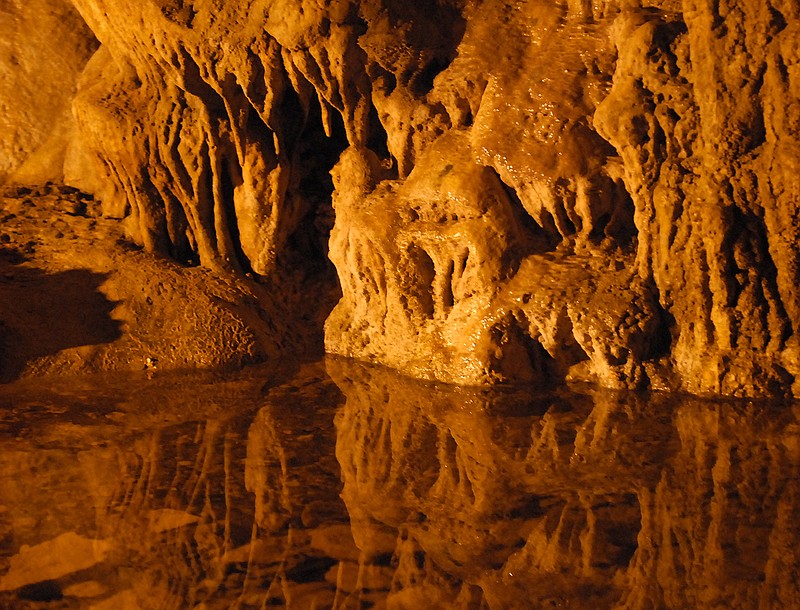Rumors of silver and gold left by the Cherokees, lost by the Union Army, sunk in the Tennessee River or entombed with the dead once abounded in Chattanooga. A February 1887 story in The Chattanooga Times reported a "crank" who proposed to find gold hidden on Walden's Ridge. The treasure seeker, Martyn, claimed to learn of the money from Cherokees in Indian Territory. He had pick, shovel and sledgehammer to pursue his dream, but no story of success or failure followed.
In November 1889, another tale of Cherokee wealth appeared in the Times. This time, legends of Cherokee silver came from Stephen Foreman, a Cherokee living in Chattanooga. He told of a cave holding a fortune in silver, but none could be found. Foreman vowed that the treasure would be his and pronounced: "Walden's Ridge contains veins of silver known only to the Indians and one white man, with whom I have talked on the subject. I doubt not that valuables to the amount of thousands and perhaps millions of dollars were hidden by the Indians within 10 miles of Chattanooga, and I am here to find some of this wealth." The newspaper ran no further articles about Foreman or his silver.
A 6-foot shaft was dug into the Tennessee River bluff at the foot of Lookout Street in September 1896. Anxiously awaiting what might be at the bottom were Mrs. Furman, Mrs. Camp and Mr. Bolton. It turned out that the digger, Alex Johnson, simply wanted to get paid for swinging the pick. Mrs. Furman had learned from a long dead friend that John Ross had secreted several hundred thousand gold dollars in the bluff. The rumor was that the Cherokee chief had received government money and had buried it at Ross's Landing. A Chattanooga Times reporter asked Capt. John P. Long, Chattanooga's first postmaster, for his opinion. The captain laughed and replied "the only money he [Ross] ever got from the government was for moving the Indians from Chattanooga and he did not receive that until he left Chattanooga." Had he buried any gold, he would have retrieved it when he returned to the city in 1862.
A party of intrepid treasure hunters sought gold on Raccoon Mountain in 1914. Bolt, the head of the expedition, had received a message from somewhere beyond that a fabulous cache of silver awaited him. He drew a map based on a spirit's instructions and armed himself. Bolt found a small cave on the mountain and descended but returned saying only "that he had an uncanny experience that forbade further investigation." Bolt later overcame his wariness. With a companion and a young boy, he secured a horse and buggy for a return to the cave. The horse became terror-stricken along the road, fell and went no farther. There was nothing that the treasure seekers could find that would scare the animal to such a degree. Undaunted, the party continued into the cave, securing itself with ropes tied to nearby trees. The first chamber they entered held Indian arrowheads and other signs of use by local tribes.
Bolt and his friends crawled another 60 yards underground when an invisible force seemed to join them. The men could not explain their weird feelings and rushed out of the cave, skinning knees and elbows in the process. Bolt later attended a séance at which he learned that the unknown force that gripped them was the same spirit that had led them to the cave. Had they not fled, they would have soon found the treasure.
It was a Saturday night edition of the Chattanooga News in April 1937 which reported someone digging near the National Cemetery. Mrs. Otis McCormick of 1092 Chestnut Ave. reported hearing a noise late at night. The next day she found a trench 3 feet deep and 3 feet wide leading from the pit of a razed house. A small, empty brick vault was uncovered. Whether the vault held buried treasure was never reported.
The Tennessee River was supposed to hold treasure from several sunken ships. "Guide to Treasure in Tennessee" by Michael Henson provides several instances of ships with their cargo that sank to the bottom of the river. The Lincoln sank in 1851; the Union Army scuttled the Lookout in 1865; and the Parker's boilers blew in 1907.
Suzette Raney is an archivist for the Chattanooga Public Library. For these and similar stories, visit the Local History and Genealogy Department, call 643-7725 or visit Chattahistoricalassoc.org.
